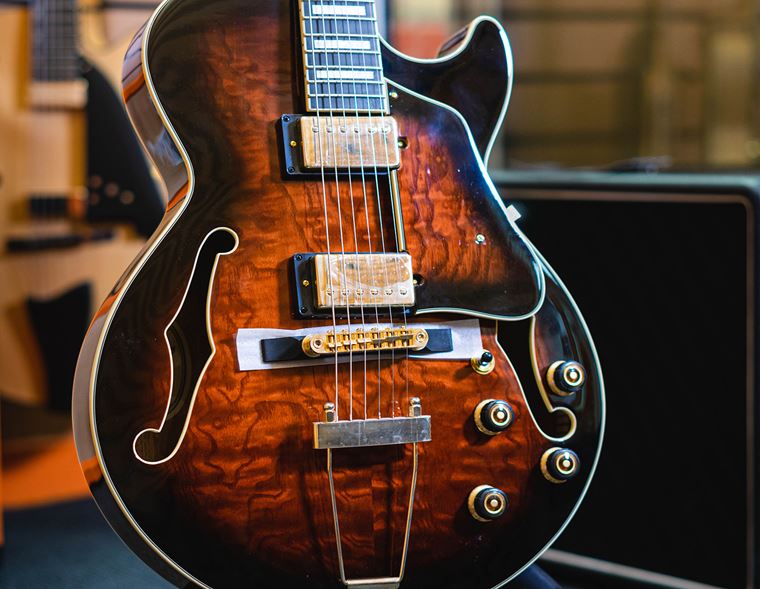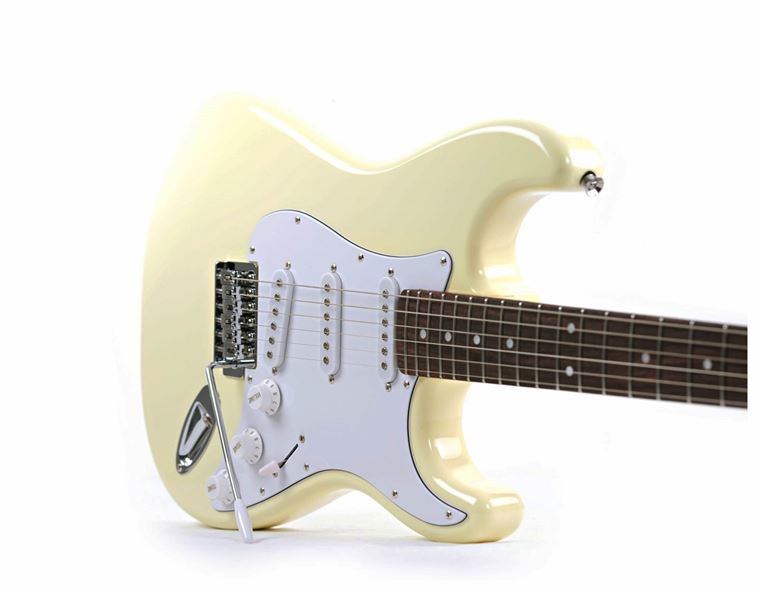Quad Cortex vs Helix vs Kemper - A Guitarist's Guide
Published on 16 September 2022
Are you considering a digital modeller for playing, recording or gigging? If so, stick the kettle on and have a sit down for ten minutes, because I may be able to offer some insights!
I have a long history with digital modellers. We talk a lot about them in guitarguitar because they’re basically better than ever, and because loads of top touring bands are now using them instead of traditional amps. Personally, I’ve been using different modellers for a number of years, plus I’ve interviewed a number of guitarists who now swear by them. The times have most definitely changed, and we thought it was worth discussing the subject from a more personal point of view. As someone who has demoed and sold them in the past, and who now writes about them, I seem to be in a relatively useful position to offer some first hand insights.
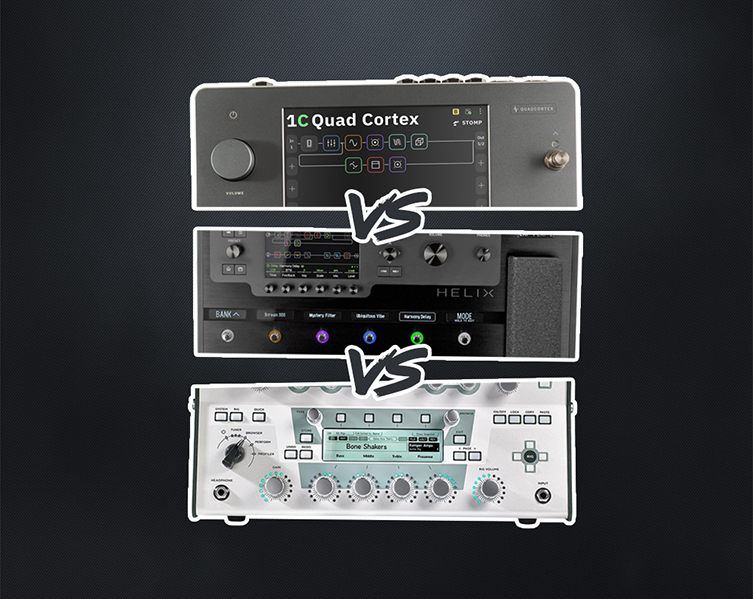
Today’s blog concerns itself with the current ‘big three’: The Kemper Profiler, the Line 6 Helix and the newest, the Neural DSP Quad Cortex. Conspicuous by its absence is the Fractal Audio Axe FX. Why? Simple: they sell direct, so I’ve not had a decent amount of access to one, basically. Dealers don’t get them, so, whilst I have played through one, I’ve hardly had the required level of experience with one to form a useful opinion past the somewhat useless ‘sounds great!’ commentary. The ones I’ve encountered through my work, my playing and my own gigging are the ones I feel more qualified to speak about, so they are the ones we’ll discuss today.
A Lifetime of Pedals and FX
Brief context time, then. Like all of us, I was drawn to the guitar as a young person because I heard and saw other guitarists doing amazing things and wanted to copy them. For me, it was initially the buzzing tremolo sounds employed by Peter Buck on REM’s Monster album that proved to be the motivating factor. Not long after, I discovered the futuristic blasts of noise delivered by Trent Reznor and became hooked on effected guitar sounds. A simple but strong desire to recreate those sounds set me off on my mission, and it quickly led me to the multi-fx units of the mid 90s.
Anyway, moving ahead, in recent years I decided that a full-on half stack and stupendously overloaded pedalboard was not the simplest way to go about either recording at home or gigging, particularly for someone living in a tenement with no car! Thus, I opted for what at the time was the most cutting edge modelling unit on the market: the Line 6 PODHD500X (I’d had various BOSS GT units, Zoom things and more in the past, alongside innumerable fancy stompboxes with hand-painted cases). This was the top dog until the Helix came along in 2015, and it was a whole lot easier to jump on the tube into the city centre with!
It may be interesting to note that, before I fully committed to the digital life, I dipped my toes in the cyber waters by buying a Line 6 M13 (this article is not sponsored by Line 6, by the way, it’s just how this all happened to occur), which was a big stompbox modeller. The idea with that was that you’d still use a traditional amplifier, but this thing would replace all of your individual stomp boxes. I liked the idea of being able to do unusual (silly) things like having four flangers on at once, so the M13 worked well for me. The real proof of the technology, however, was that I actually owned a few of the very pedals that the M13 modelled, so I could literally A/B them. Interesting! Needless to say, I heard enough similarity between the simulations and the ‘real thing’ to promptly jettison the stomp boxes and continue with the modeller. The PODHD500X followed some time later, when I physically couldn’t take the notion of staircases and Marshall cabinets any more. I went fully digital!
The important take away from this is that I never felt that my sound was lacking as a result. Setting up at gigs was really easy, and if I had access to a monitor wedge, I could go about my business with no real compromises. I could have access to vastly different rigs (all with completely different FX algorithms) at a moment’s notice, without any discernible loss in quality. If you’ve ever been at the mercy of amp sharing at gigs (or even rehearsals), you may be nodding silently at the logic employed! Careful dialling in of tones (and not necessarily paying attention to what the amp models say they’re supposed to sound like) and lots of experimentation yielded great results, and this applies to the units that came after it, too. I’ve played gigs with the Kemper and the Helix since (as well as spending many years on the guitarguitar shop floors demoing and selling such units to a broad spectrum of remarkably lovely people) and found some interesting things to compare about each, which brings us roughly up to date! So, background credentials in place, let us venture onwards.
The Three Modellers
Thus, we arrive at the here and now. We have context and info on my personal experience, and now I’ll share my thoughts on the pluses and minuses of these three flagship modellers. The Kemper was the first to be released, so we’ll begin there.
Kemper Profiler
The Kemper’s distinctive lunchbox design is now well known across the world. Developed by the same people who revolutionised digital synthesizers with the (still the best synth ever) Access Virus TI, the Kemper found a new way to model amps by ‘profiling’ them. That is, running a special algorithm around the electronics of actual vintage amps and back to the Kemper’s mighty brain, delivering not only the sound but the feel, response and behaviour of the amp in the process. I won’t pretend to know how this unholy wizardry actually manages to result in a fully realistic amp sound, but it does! This is how many of today’s modellers operate - more or less - so Kemper blazed a trail for sure! The Kemper comes loaded with a large array of ‘profiles’ (tones) and an endless number are available to install from online forums, as is the case with the other modellers too.
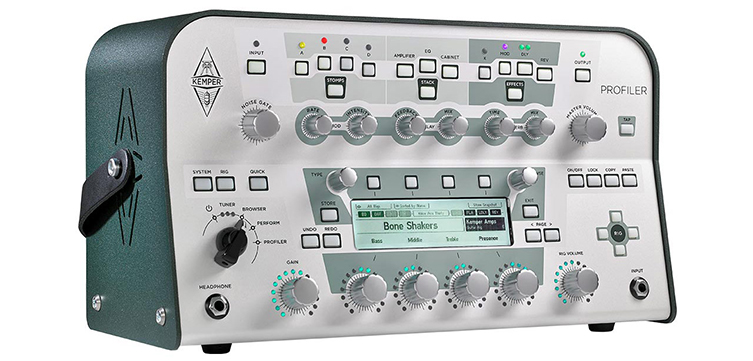
The Kemper has been around for well over a decade now, making it the oldest of the products on test today. Whether that’s an issue or not depends on your perspective: guitar amps haven’t necessarily improved in any way since maybe the early 90s, so if the processing in the Kemper is up to speed, I don’t see age being a huge concern, as long as the firmware and so on is constantly updated, which it is.
The front panel of the Kemper is well populated with real time controls, and the layout is very sensible. I don’t anticipate any players with any degree of amps and effects experience having issues navigating this landscape of buttons and dials. A large green screen keeps you right, and though it’s not as up to date as the other screens we’ll see today, it does its job just fine.
One significant thing to bear in mind is the tabletop nature of the main Kemper design. A floor version is now available, so if you plan to play gigs, you may want to consider this version, since you’ll otherwise need to buy an additional dedicated footswitch, upping the cost.
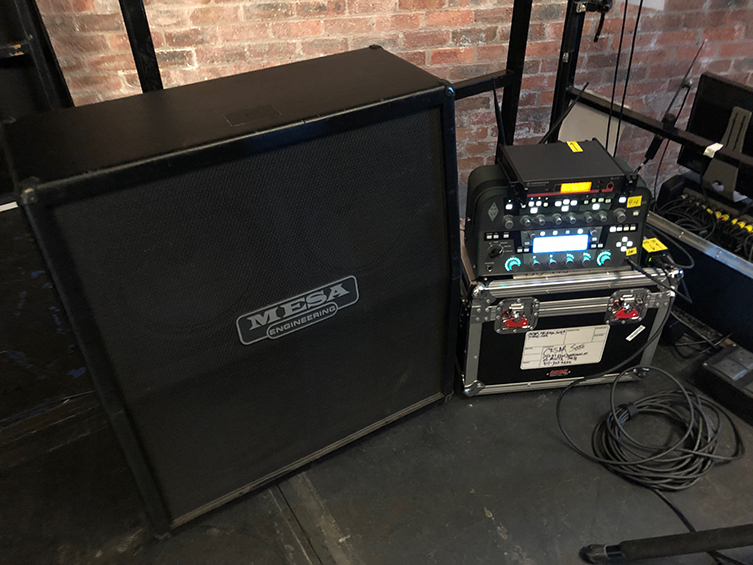
The Kemper is also the unit beloved of megastars like Mark Knopfler and Jason Isbell, so there is a lot of clout in such associations. More about that soon, but let’s move on.
Line 6 Helix
Line 6 are possibly the most significant ‘big brand’ when it comes to digital modelling. They’ve spent decades developing and upgrading their technology, releasing it in ever-improving generations of products. The Helix is the culmination of all of this R&D, and this particular Helix Floor model - their first of the Helix family - is also their flagship processor.
Large, incredibly solid and chock-full of features, the Helix immediately impresses, though features like the ‘scribble strips’ above each footswitch (little screens for additional text) may overwhelm users less accustomed to having a mini spaceship under their feet!
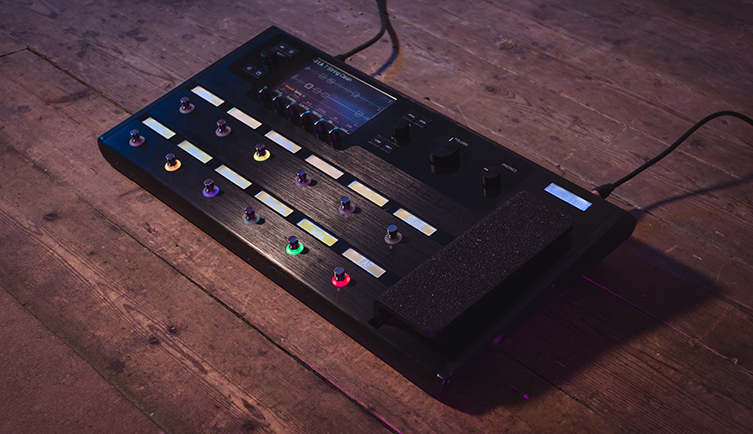
Looking at the back, Line 6 have included every thinkable connection that a pro player (not just guitarists, it’s worth remembering) may require, including multiple stereo fx loops, XLR, SPDF and even the ol’ Variax connection in addition to the expected ins and outs. It’s a confident, comprehensive attitude that has put this unit at the feet of a great many performers out there in the real world. Solid switching and a good expression pedal make this a gig-proof proposition indeed.
The Helix has been around for a few years too, debuting in 2015. Since then, Line 6 have continually updated the firmware, and a large number of users frequently post patches online for free download, just as with the Kemper. This of course opens up each unit to a range of fun possibilities, for no extra cost.
Neural DSP Quad Cortex
Our third choice today is also the newest. Technically, it’s been out for a couple of years now, but demand for the Quad Cortex has been so astronomically intense that availability has been like the proverbial hen’s teeth up until very recently.
So, it’s the newest and - on paper at least - most powerful unit of all, but that in and of itself doesn’t mean too much unless that massive tech has been put to good use. We’ll get to that soon, but before that, it’s worth checking the exterior of the Quad Cortex, too. It’s the smallest unit by quite a measure - easily portable within regular rucksacks and so on - and at least as well built as the Helix, so we’ve full confidence in it’s roadworthiness.

The unit boasts a large coloured touchscreen, which is where the lion’s share of editing and interaction takes place. Even the footswitches are innovative since they include built in encoders (a new-gen word for control knobs): you twist them to change parameters and stomp on them to turn things on and off, basically. It’s tidy and elegant, in keeping with the minimalism of the overall aesthetic.
The back panel is well appointed, though I found myself lifting the unit up too often to eyeball the location of certain inputs. Simple labelling on the face of the unit would sort this, but that would detract from the unit’s sleek look. In this case, I’d have preferred the function but that’s a personal opinion.
In Use: Pros and Cons of Each Modeller
So, onto the practical comparison. This is not so much a sterile, scientific procedure as much as it is an honest report on my own findings with each unit. Whilst professing a degree of familiarity with all units, I don’t have a particular allegiance to any, nor would I imply an exhaustive level of knowledge on every tiny detail. What I am is a guitarist of some 28 years, with an interest in sounding as good and as exciting as my abilities, imagination and equipment allows. With that in mind, let’s see how each unit fared for me…
The Kemper Profiler
The Kemper is instantly impressive and easy to work with. The unit I had access to contained both factory presets and user-created profiles, which are relatively easy to make providing you have access to amplifiers that you want to profile! As much as anything tone-related is subjective, I’d say that the results are realistic and accurate: the Kemper does do what it sets out to do, and it performs to a high standard.
A few years back, I had the pleasure of interviewing Cesar and Sin from Ministry, and both of them used Kempers (as did frontman Al Jourgensen) for their crushing live tones. Cesar in particular is a big collector of vintage amp heads, so his use of the Kemper is a real seal of approval. As we implied earlier when we mentioned Knopfler and Isbell, when musicians who are in the position to take any gear they like out on the road actually choose these over conventional amps, it’s quite a compelling fact.

In practice, I found the front panel very usable but the screen menus a little less instant. I’m no stranger to pressing through endless options but I do feel like this is maybe where the unit is showing its age the most. That said, once you’re comfortable with it, it’s like any other system.
Sonically, the Kemper still sounds exceptional, whether through good headphones, studio monitors (I’ve used both KRK and Yamaha for this) and full–on PA. It sounds deep and vital, with all the character of your given amp voice (Vox, Fender, Marshall etc. etc.) fully present. When testing each modeller, I used two guitars in particular: a nice 2008 Les Paul Custom with ‘57 Classic pickups, and a Fender Player Strat with a fairly monstrous Seymour Duncan Black Winter humbucker in the bridge. Between this pair, I could go from Hank to Hetfield, covering most significant bases in-between too. I found the Kemper to be equally impressive at vintage clean, retro rock, classic rock and modern high gain sounds. Many units of the past excelled in one area and lacked in the others, but I didn’t find that to be the case with the Kemper. Whether I played some Billy Gibbons leads or pummelled some Mastodon riffs, I left impressed. Each guitar’s personality came through loud and clear.
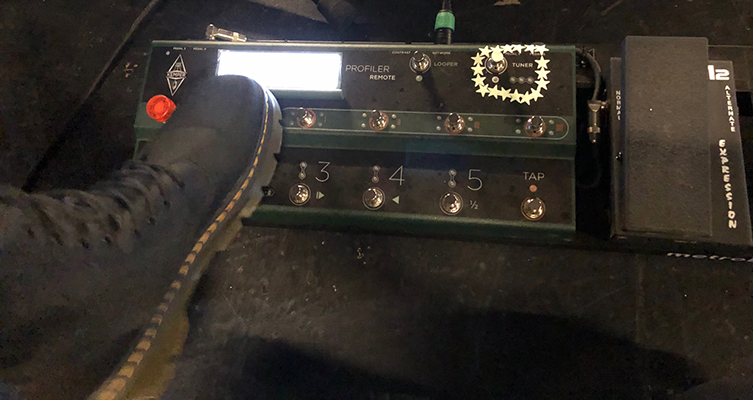
The downside? The overall design, as we mentioned earlier, is not exactly gig-friendly without the additional cost of the Kemper’s pedalboard. Whilst it can be argued that this makes it no different from any other amplifier (you can’t stomp on a Fender Twin, after all), it still puts it behind the others in terms of practicality and useability. If I can take a pedalboard modeller along to a gig with every sound already on it, why would I want to have to take a lunchbox head too? Choosing the Kemper’s floor modeller version of course allows this, though you do lose a little of the surface real-time control in order for the unit to be a reasonable size.
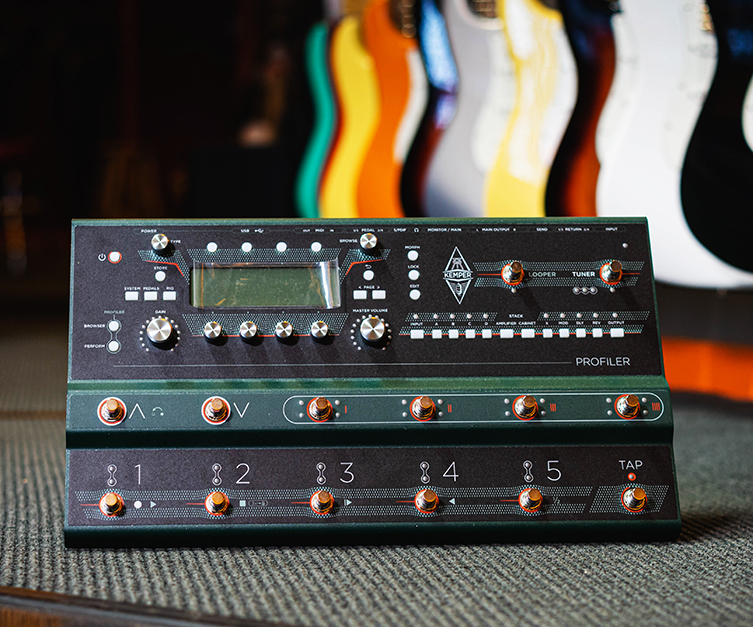
To sum up, the Kemper is great: it sounds excellent and you can go in very deeply with the edits, though it is expensive and relatively old now. Next!
Line 6 Helix
There’s a whole family of Helix products available now, from the diminutive HX Stomp to the flagship Helix Floor, which is the focus of today’s comparison. We’ve noted the impressive build and external features already, but how did it compare in action?
Well, the first thing I felt when playing the Helix is that it’s quite an exciting unit to use. Whilst preset tones are often worth only a quick spin through, the ones on here sounded very nice, with a good mix of ‘sensible’ and ‘adventurous’. Each unit has a plethora of effects of course, but Line 6 have obviously spent some time making it clear to users just what is capable on this one.
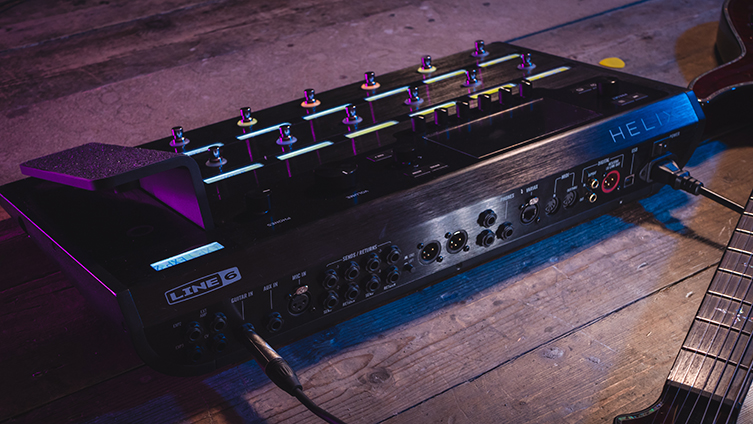
In terms of sonics, the unit sounds predictably great, though my ear did prefer the high gain sounds on the Kemper. This is subjective of course, but high gain sounds seem to be more of an issue for modelling units than other sounds. It’s actually something I noticed many years ago, and all manner of experimenting with headroom, levels, EQs etc have never entirely dispelled that notion. We’re talking about tiny increments here, by the way: to the casual listener, all of these sounds will be absolutely majestic, but the point of this article is to be critical, and I think the Helix juuuust misses the edge on the super heavy tones.

Where it hits a slam dunk is in its design and functionality. It’s an easy unit to use, despite the size and depth of the sonic ‘menu’ available, as it were, and it’s very intuitive to navigate. Is this because I’m used to Line 6’s way of doing things? Perhaps, but I’d maybe venture it’s more due to their long experience of making such units: they've had the time and the customer feedback to really refine things to a fine art in terms of interaction. The Helix is quick and easy to set up and manipulate, which engenders a huge sense of confidence when it comes to branching away from the presets and creating tones. The pedals themselves are solid, well-spaced apart and have their own screens for additional info. There’s also a good quality expression pedal, which I’d say is essential, making it a strange fact that none of the others have such a thing! Also, the colour coding of effects is much more straightforward that the Quad Cortex’s icons, which we’ll get to. In terms of actually using the unit, I found the Helix to be the smartest, easiest and most rewarding.
Neural DSP Quad Cortex
Finally, we come to the Quad Cortex. It is the newest and on the more expensive side of our choices today. It’s also the smallest, and Neural have made a big thing about how ergonomic and interactive the unit is. Interestingly, I have found this one to be the least user friendly of all three units. I initially found the menu and modes (preset, stompbox mode etc) to be unnecessarily fiddly, and after a few weeks’ worth of lengthy playing sessions, that feeling never left me. It feels like there are one or two too many hoops to jump through to get to certain screens, and then - unless you are in the correct mode - you can be penalised for bringing up the wrong menu by losing your unsaved settings. Unforgivable! Indeed, even saving your settings is a precarious act until you learn the process (and find where in the multiple locations you’ve to put your creation). Again, as no newcomer nor luddite to this type of technology, I found the user interface somewhat below par. Would I eventually get used to it? Most probably yes, but these initial stages can be what put people off these devices all together, so it’s a shame to have a less than easy time on this new device.
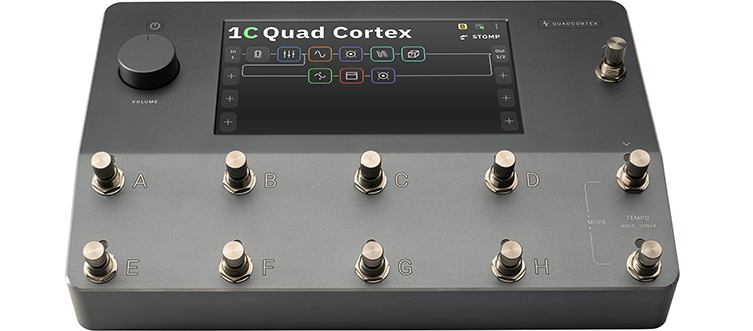
What isn’t below par, however, is the quality of the sounds. Even if the effects choices are a little bland and limited compared with the Kemper and the Helix, the actual sounds themselves are pretty spectacular. Of all three units, the sounds onboard the Quad Cortex are, to these ears, unmatched. Clean tones, mid-gain sounds and yes, those snarling high gain stacks all sound incredibly realistic and three dimensional. They are also extremely more-ish: I found myself wandering back across to the small selection of presets I’d created more often than expected, just to blast out a few notes, before noticing that I’d been at it for half an hour! That’s a great sign! Once you’ve got this thing where you want it, it’s unbeatable! It’s just getting there in the first place that can be off-putting and even demoralising to those who can’t take the fuss of menus and non-linear paths.
So, the sounds themselves are exceptionally good. The effects onboard are a little bit ‘same old’, but I understand that updates have recently added more ‘cool stuff’, so that should be taken into account. I didn’t like the menu navigation, and I found the graphic icons for each effect type to be counter intuitive: what ‘looked’ like a delay icon, for example, turned out to be an amp sim or IR icon instead! Again, a long term user would grow accustomed to these conventions no doubt, but the unit lacks the immediacy of the other two, almost to the point of frustration.

I liked the idea of the foot switches doubling as encoders, but in practice found the experience to be less satisfying. The lack of an expression pedal means any volume/wah/pitch/extra creativity comes at the extra expense of investing in another pedal. The size of the unit is brilliant in terms of carrying it around, but it wasn’t ideal for my size 12 feet: In the heat of a gig, a player needs supreme confidence in their footswitches: these are super-well made but the fear of hitting the wrong pedal (it happened too often not to notice) is a confidence killer.
So, in summation: the Quad Cortex is an outstanding sounding piece of gear, but the object itself and its functionality left a lot to be desired from this user.
The All Important Conclusions
The first thing I’d say before I conclude today is that these are my own observations from using all three units in a pretty fair way. I didn’t want to start comparing stats or features in any way beyond what came across in practice. I hold no particular affection for any brand, any method of making sound, and I had no expectation of outcome. Price was a factor, of course, because these are products that are for sale, so it’s a relevant point.
Also, I didn’t go into the minutiae of selecting Impulse Responses or reporting back on whether one product performed better through a PA or not etc. They all acquitted themselves to a super high standard, as you’d expect with professional gear. Really, my priorities were: how do these things sound and how is the user experience? After all, those are the two most critical factors.
Here’s my conclusion, based again on my own experience. The Quad Cortex is the best sounding, quite clearly to my ears. It’s also the one I enjoyed editing the least. I’d recommend it on the basis of its sounds, and on the presumption that the user experience is something that will become less of a frustrating chore the longer one uses it.
The Kemper sounds amazing and is very straightforward to use. It’s available in a number of iterations, so studio owners can pick the rackmount or lunchbox version, and gigging players can either opt for the floor-based version or add the additional floorboard to the lunchbox Kemper. That said, it is the oldest and is by no means the cheapest.
Finally, the Line 6 Helix is, to this player, by far the easiest and most fun of the three to use. It’s deep without being overtly complex, and has lots of real time control without being too busy. The sounds are excellent, but by a tiny margin, they are third to the Kemper and Quad Cortex in that department. I’d recommend the Helix for any gigging player since it’s the most comprehensively spec’d unit for the actual job in hand.
All three units are excellent and all three have their own achilles heels. Best sounding? The Quad Cortex. Best experience? The Helix. Those are my conclusions. All three units are constantly being upgraded in terms of firmware and patches/profiles, so these findings may well be quite a different story in a year or so! That’s the way of digital technology, but as of September 2022, those are my conclusions.
Thanks for reading the blog! I hope some of it resonated with you or proved useful! Digital modelling is here to stay, and it’s a fun world for guitarists (and bassists!) so get involved! These are the top units, but a great many more exist, so have fun exploring the possibilities!









